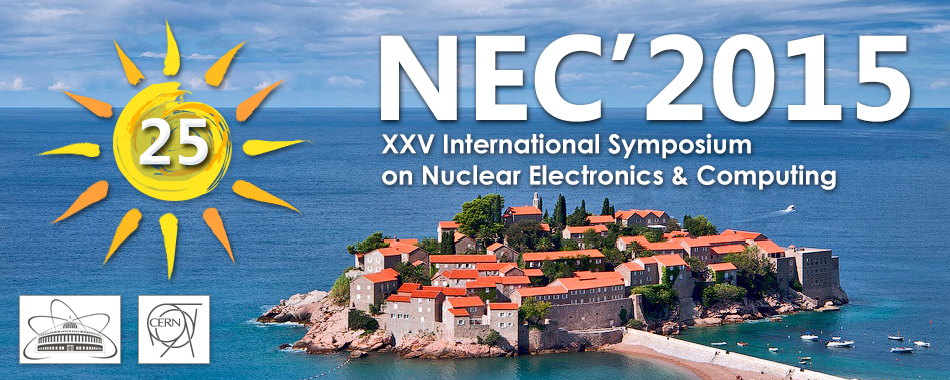Speaker
Mr
Mikhail Buryakov
(JINR, LHEP)
Description
A conceptual design of the MultiPurpose Detector (MPD) is proposed for a study of hot and dense baryonic matter in collisions of heavy ions over the atomic mass range A = 1–197 at a centre-of-mass energy up to √(s_NN ) = 11 GeV (for Au79+). The MPD experiment is foreseen to be carried out at a future JINR accelerator complex facility for heavy ions – the Nuclotron-based Ion Collider fAcility (NICA) which is designed to reach the required parameters with an average luminosity of L = 1027cm−2s−1.
Ambitious physics goals of MPD require excellent particle identification capability over as large as possible phase space volume. Charged particles in a large momentum range are identified in the MPD by the Time of Flight (ToF) detector. Overall time resolution should be better than 100 ps. For the TOF system of the MPD the Multigap Resistive Plate Chambers (MRPC) with a strip readout are used.
Very important part of the high performance of the ToF system is a readout electronics. For the full exploitation of the excellent timing properties of the Multigap Resistive Plate Chamber, front-end-electronics (FEE) with special characteristics are needed. The signals from the MRPCs must be amplified and discriminated as fast as possible without lossless. A signal is read from two sides of the strip, which makes problems like a compatibility the FEE .
A NINO application-specific integrated circuit (ASIC) has been decided as a base of front-end-electronics. The NINO ASIC developed by the CERN LAA project, which combines a fast amplifier, discriminator and stretcher. Preamplifier board, based on the NINO ASIC, designed in the Laboratory for High Energy Physics (LHEP) for compatibility used in the ToF-MPD MRPC.
According to the results of bench tests preamplifier board showed a stable work and good time resolution >10 ps. Also tested with the detector beam of the Nuclotron and achieved time resolution of the system Electronics-Detector ~ 55 ps.
Author
Mr
Mikhail Buryakov
(JINR, LHEP)
Co-authors
Mr
Mikhail Rumyantsev
(JINR, LHEP)
Mr
Sergey Volgin
(JINR, LHEP)
Mr
Vadim Babkin
(JINR, LHEP)
Mr
Vyacheslav Golovatyuk
(JINR, LHEP)

